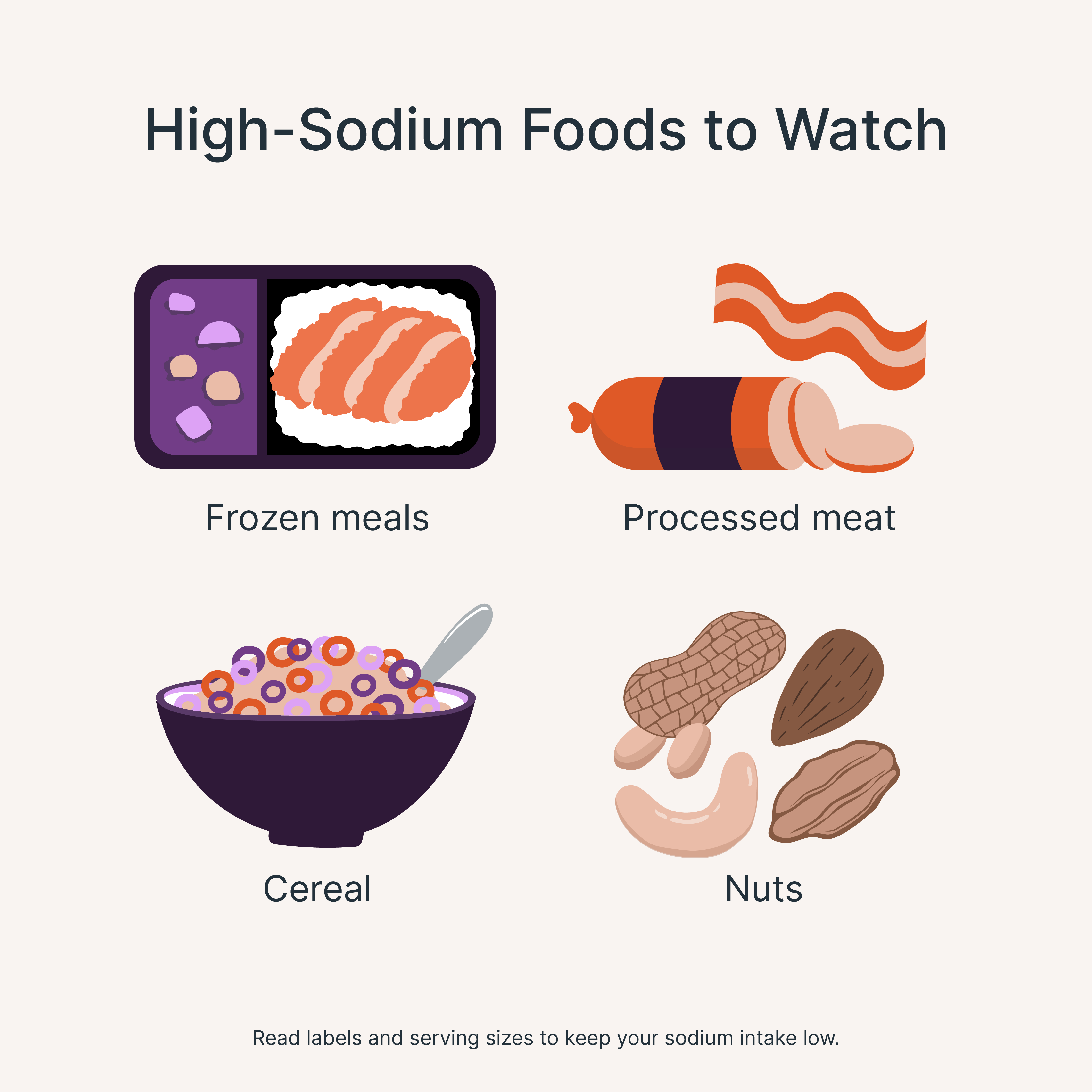4 Surprising High-Salt Foods

Many foods you can buy at the grocery store have surprisingly high levels of salt (sodium). When you’re following a low-sodium diet like the DASH diet, these foods may be best to avoid.
Frozen Meals
Frozen meals are incredibly convenient. They also tend to have a lot of salt. Frozen meals can have more than 700 milligrams (mg) of the daily suggested 2,300-mg limit on sodium — that’s a lot for one meal!
To find better options, look for words on the package like “low sodium” and “no sodium added.” Check the nutrition label to see exactly how much salt is in each serving. Optimally, a frozen meal should have less than 600 mg of sodium.
If you’re looking for similar grab-and-eat convenience on a low-salt diet, try meal prepping and freezing your own homecooked meals to have later.
Processed Meat
Processed meats are high in salt. This includes pepperoni, sausage, deli meats, and hot dogs. In these foods, salt is used for flavor but also as a preservative to help the meat stay good for longer.
To lower your sodium intake, opt for fresh cuts of meat or poultry instead.
Cereal
Many breakfast cereals, including oatmeal, not only have added sugar, but sodium as well. According to the U.S. Department of Agriculture, one popular cereal has 270 mg of sodium in just a ½-cup serving. (Add in milk, and you have nearly 500 mg of sodium in your sweet breakfast.)
Not all cereals are created equal, though. Again, check your labels, and lean toward options like plain oatmeal rather than flavored varieties. Plain oatmeal has only about 5 mg of sodium.
Nuts
Nuts can be a healthy, savory snack, but look for unsalted varieties. A handful of salted nuts can pack a whopping dose of sodium. Switching to unsalted nuts makes a big difference.
The long story short? Check your label, as salt can sneak into many unexpected foods, especially processed and pre-packaged options.
Sources:
- American Heart Association. (2024) Shaking the Salt Habit to Lower Blood Pressure.
- Centers for Disease Control and Prevention. (2023) Sodium Reduction: State Policy Interventions by Evidence Level
- Cleveland Clinic (2021) 8 Ways to Find the Best Frozen Meals
- Mayo Clinic. (2023) DASH Diet: Healthy Eating to Lower Your Blood Pressure.
Want to Read More?
Access all of Dario Connect’s content, community, and experts for free!
Already a member? Login
Want to Read More?
Access all of Dario Connect’s content, community, and experts for free!
sign UP For FreeAlready a member? Login

